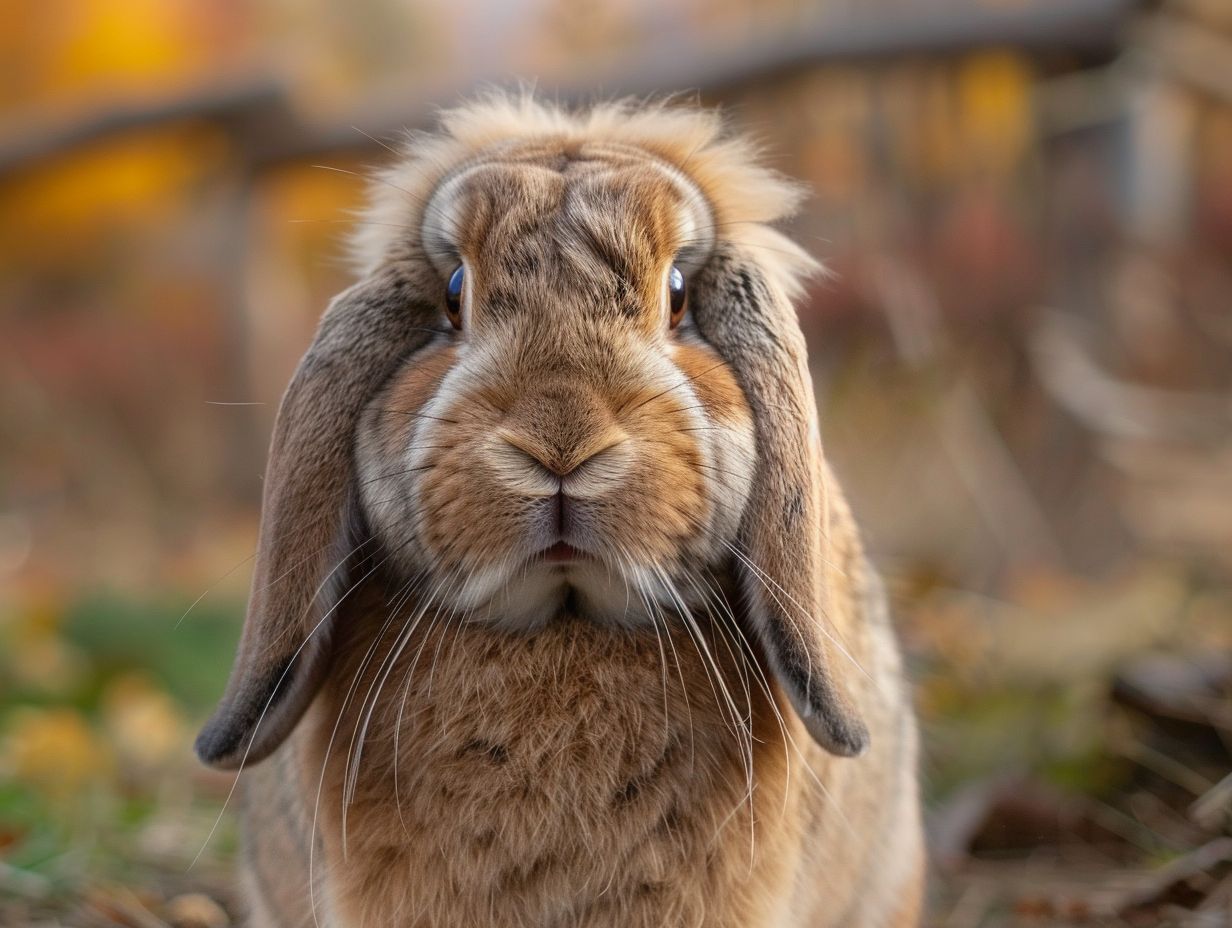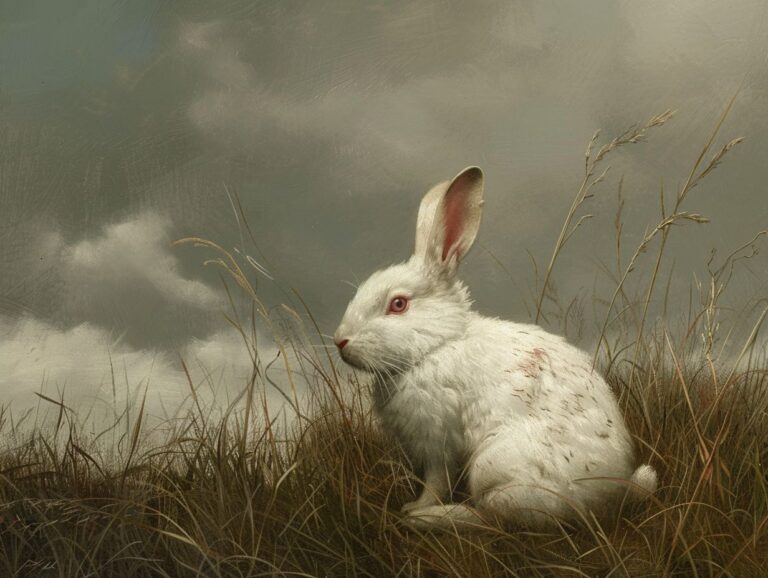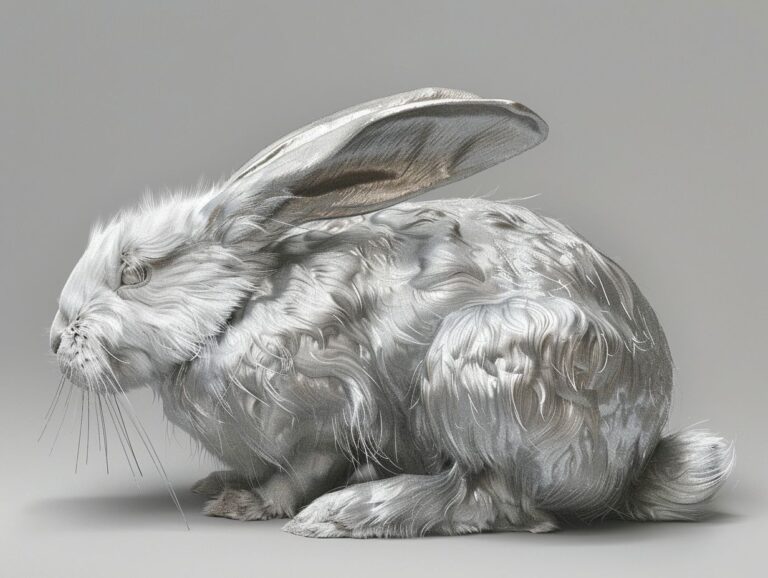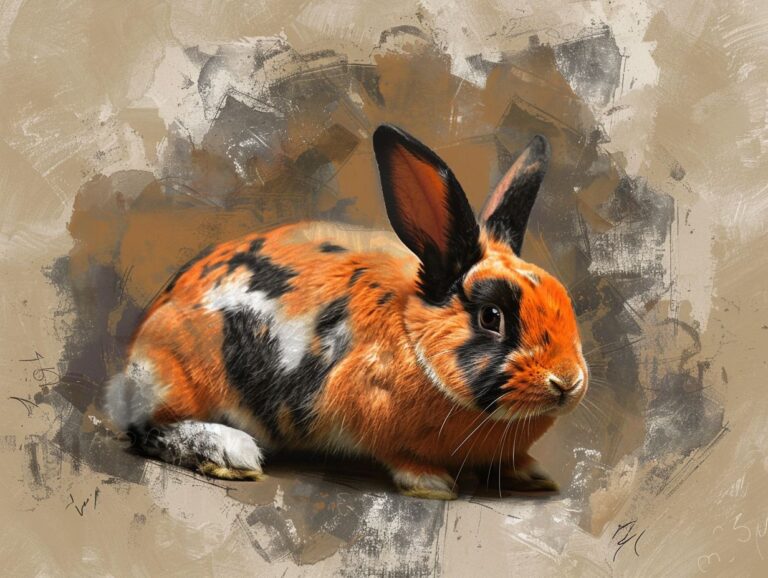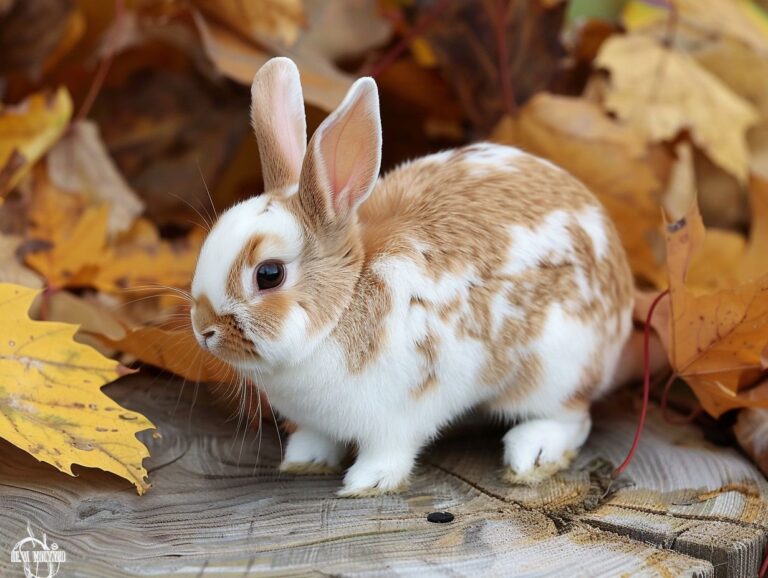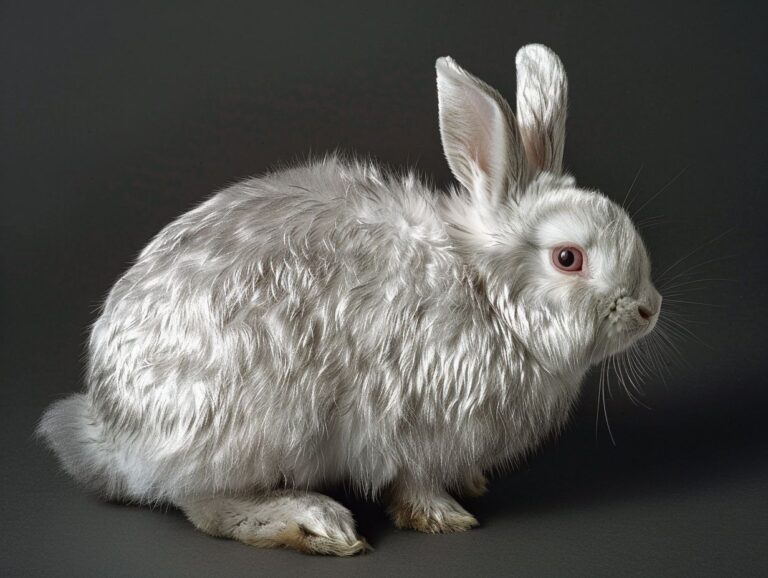French Lop Rabbit Breed: Characteristics, Care, History, and Breeding Practices
Are you curious about the French Lop Rabbit breed?
In this article, we will explore the fascinating history, unique characteristics, and proper care of these charming rabbits.
From their size and coat color to their temperament and behavior, we will delve into all aspects of the French Lop breed.
We will discuss essential tips for housing, feeding, and grooming these rabbits, as well as breeding practices and showing them.
Stay tuned to learn more about these beloved rabbits!
Key Takeaways:
What is the French Lop Rabbit Breed?
The French Lop Rabbit is a distinctive breed known for its large size and uniquely long ears, making it a popular choice among rabbit enthusiasts.
This breed originated in France and was selectively bred to enhance its gentle temperament and striking appearance. With its robust build and charming personality, French Lop rabbits have gained a significant following globally.
Their adaptable nature makes them suitable for both indoor and outdoor living environments, adding to their appeal among pet owners. These rabbits are characterized by their friendly demeanor, making them great companions for individuals of all ages. The popularity of French Lop rabbits continues to grow as more people discover and appreciate their endearing qualities.
History of the French Lop Rabbit Breed
The history of the French Lop Rabbit breed traces back to its origins in France, where breeders aimed to develop a rabbit with a unique appearance and gentle temperament.
French Lop Rabbits have a rich history that dates back to the mid-1800s in France, when breeders started selectively breeding rabbits to create a distinct breed. Known for their large, lopped ears that almost touch the ground, French Lops quickly gained popularity for their calm and friendly nature, making them ideal as pets and show rabbits.
These rabbits were meticulously bred for their docile temperament, making them perfect for handling, showcasing their versatility beyond just being cute companions. Their origin in France symbolizes a blend of elegance and character, traits that have carried through generations of breeding.
Characteristics of the French Lop Rabbit Breed
French Lop Rabbits are known for their large size, variety of coat colors, and friendly, docile temperament, making them ideal as family pets.
Their distinctive appearance includes oversized lop ears that hang down beside their faces, giving them an adorable and charming look. The breed typically has a sturdy build with broad shoulders and a well-rounded body. French Lop Rabbits have a calm and gentle temperament, often displaying affectionate behavior towards their owners. They are known to be social creatures, enjoying human interaction and forming strong bonds with their families.
Size and Weight
French Lop Rabbits are considered one of the larger rabbit breeds, with males typically weighing between 10-15 pounds and females weighing slightly more at 11-16 pounds.
As these bunnies grow, their size becomes even more striking, often reaching lengths of around 22 inches when fully mature. It’s fascinating to observe how their bodies develop, with a gradual increase in weight and length. French Lop Rabbits have a solid build, featuring broad heads, long ears that hang down on each side of their faces, and sturdy legs. Their physical appearance is not only imposing but also exudes a sense of elegance and grace.
Coat and Color
French Lop Rabbits boast a wide range of coat colors, including solid, broken, and shaded varieties, with lustrous fur that requires regular grooming for maintenance.
Coat care for French Lop Rabbits is essential to keep their beautiful fur in top condition. Depending on the coat type, the grooming needs may vary. Solid-colored French Lops have a uniform coat color across their bodies, giving them a sleek and elegant appearance. Broken coat patterns feature a mix of colors in a broken or spotted pattern, adding a playful and unique touch to the rabbit’s overall look. Shaded coat varieties exhibit gradual color changes across the fur, creating subtle and mesmerizing gradients.
Temperament and Behavior

These rabbits possess an innate intelligence that reflects in their ability to quickly bond with their human companions, forming strong emotional connections. Their sociable nature allows them to thrive in environments where they have regular interaction with people and other pets.
In terms of interacting with other animals, French Lops display a friendly demeanor, often establishing harmonious relationships within multi-pet households. Their easy-going personality and adaptability make them a joy to have around, adding a lively and loving dynamic to any home.
Care and Grooming for French Lop Rabbits
Proper care and grooming are essential for maintaining the health and well-being of French Lop Rabbits, including a balanced diet, regular grooming sessions, and preventive health measures.
In terms of their diet, Holland Lop Rabbits thrive on a variety of fresh hay, vegetables, and high-quality pellets specifically formulated for rabbits.
Grooming these fluffy companions involves regular brushing to prevent mats and to check for any signs of skin issues. Their nails should also be trimmed if they are not wearing down naturally. For more information on caring for French lop rabbits as pets, including their care, diet, and health for giant-sized breeds, click here.
To ensure their overall well-being, it is crucial to provide a safe environment, regular exercise opportunities, and timely veterinary care to address any health concerns promptly.
Housing and Living Environment
Creating a spacious and safe living environment is crucial for French Lop Rabbits, ensuring they have ample room to hop, play, and socialize with their family members.
In terms of housing , a large rabbit hutch or cage with enough space for the rabbits to stretch out and stand on their hind legs is recommended. It is important to provide separate areas for sleeping, eating, and playing within the enclosure to mimic their natural habitat. Including cozy hiding spots and tunnels can offer enrichment opportunities for the rabbits.
Family interactions play a vital role in the well-being of French Lop Rabbits. They are social animals that thrive on companionship, so having at least one rabbit companion is essential for their mental and emotional health. Encouraging bonding activities and supervised playtime can strengthen the familial bond among the rabbits.
Diet and Nutrition
A well-balanced diet consisting of high-quality hay, fresh vegetables, and commercial rabbit pellets is essential for ensuring the nutritional needs of French Lop Rabbits are met for their overall health and vitality.
Hay should be the staple of a French Lop Rabbit’s diet, providing essential fiber for digestion. Vegetables like dark leafy greens, carrots, and herbs offer valuable vitamins and minerals. Commercial rabbit pellets, specifically formulated for rabbits, can supplement the diet.
Water is crucial and should always be available. When feeding, portion control is vital to prevent obesity. Aim for about 70% hay, 20% vegetables, and 10% pellets in their daily intake.
Feeding schedules should be consistent, offering fresh food daily and adjusting quantities based on the individual rabbit’s size and activity level. A varied diet ensures they receive all the necessary nutrients for optimal health.
Exercise and Enrichment
Regular exercise and mental stimulation are vital for the well-being of French Lop Rabbits, as these activities help prevent obesity, promote healthy behaviors, and showcase their playful temperament.
Playtime is a crucial aspect of keeping French Lop Rabbits happy and healthy. Engaging with toys like tunnels, balls, and puzzle feeders encourages them to stay active and curious. Providing a variety of toys and rotating them regularly can prevent boredom and stimulate their minds.
Interacting with their environment is also key for their overall well-being. Creating a rabbit-safe area for exploration and play allows them to express natural behaviors like hopping, running, and digging. Incorporating objects to climb on or hide under adds mental enrichment to their daily routine.
Health and Veterinary Care
Regular veterinary check-ups, preventive care against common health problems such as GI stasis and malocclusion, and a keen eye on their overall well-being can help ensure a long and healthy lifespan for French Lop Rabbits.
French Lop Rabbits are known for their gentle nature and distinctive appearance, with their large drooping ears and sleek fur. It’s crucial to ensure they have a well-balanced diet rich in fiber to prevent digestive issues like GI stasis, a common concern in rabbits.
Dental care is essential to prevent malocclusion, a condition where their teeth misalign due to overgrowth.
Regular grooming and monitoring their activity levels are also vital aspects of caring for these rabbits. Being prone to obesity, providing ample space for exercise is crucial. As they age, keep an eye out for signs of arthritis and ensure they have a comfortable living environment to support their well-being.
Breeding Practices for French Lop Rabbits

Breeding French Lop Rabbits requires careful selection of breeding stock, understanding mating behaviors, and providing adequate care during pregnancy and birth to ensure the health and vitality of the litters.
When choosing breeding pairs, you should look for individuals with excellent health, temperament, and conformity to breed standards. Evaluating their lineage for genetic diversity and potential health issues is also crucial. Selecting rabbits that complement each other can improve the overall quality of offspring. Managing pregnancies involves monitoring the doe’s diet, providing proper nesting materials, and ensuring a stress-free environment. Newborn care includes keeping the nest warm, ensuring the doe nurses them properly, and monitoring their development closely.
Choosing Breeding Stock
Selecting suitable breeding stock for French Lop Rabbits involves assessing physical traits, genetic backgrounds, and health histories to maintain breed standards and produce healthy offspring.
When choosing breeding stock, genetic diversity is a crucial factor to ensure a robust lineage and prevent the risks of inbreeding. By introducing new genetic material, it enhances the overall health and vitality of the breed.
Health screenings are also vital in the selection process. Conducting thorough health checks can identify any potential hereditary issues that may be passed on to future generations, minimizing the chances of genetic disorders.
Setting clear breeding goals is essential to determine the direction and purpose of the breeding program. Whether aiming for specific traits or temperament modifications, having a defined objective helps maintain focus and consistency in the breeding process.
Mating and Pregnancy
Understanding the mating behaviors, gestation periods, and birthing process is essential for successful breeding practices with French Lop Rabbits, ensuring the well-being of the mother and newborn kits.
American rabbit breed: Characteristics, Care, History, and Breeding Practices typically reach sexual maturity around 4 to 5 months of age, but it’s advisable to wait until they are at least 6-8 months old before breeding to ensure optimal health.
Mating usually takes place in the evening or at night and can be a somewhat noisy affair with grunting and circling the female by the male. The gestation period for French Lops lasts approximately 28-31 days, after which the female will start preparing a nest for her impending litter.
Birth and Care for Litters
Providing a safe and nurturing environment for newborn litters, monitoring their growth, and providing appropriate care post-birth are crucial steps in the breeding process for French Lop Rabbits.
During the birthing process, the mother rabbit typically creates a nest using hay and her fur to keep the babies warm and protected. Maternal care is vital in ensuring the newborns receive proper nutrition, warmth, and cleaning. Learn more about the English Lop rabbit breed for characteristics, care, history, and breeding practices.
Weaning takes place around 6-8 weeks of age, gradually introducing solid foods alongside mother’s milk. Socialization within the litter is essential for young rabbits to learn social cues and behaviors from one another as they grow.
Showing and Exhibiting French Lop Rabbits
Participating in rabbit shows and exhibitions allows French Lop Rabbit breeders and enthusiasts to showcase their rabbits’ best qualities, grooming skills, and adherence to breed standards.
In terms of grooming for a rabbit show, meticulous care is essential. This involves bathing, nail trimming, ear cleaning, and fur brushing to ensure the rabbit’s coat is clean, shiny, and free of mats. Showmanship plays a significant role as well; from handling the rabbit with confidence to presenting it in the best light possible. Judges evaluate various criteria such as body shape, fur condition, eye color, and overall health to determine the winning rabbits. It’s not just about appearance; behavior and temperament also play a crucial role in impressing the Lilac rabbit breed.
Frequently Asked Questions
What are the characteristics of the French Lop Rabbit breed?

What special care do French Lop Rabbits require?
French Lop Rabbits have specific care needs due to their large size. They need a spacious living area with plenty of room to hop and play. They also require a high-fiber diet consisting of hay, fresh vegetables, and a small amount of pellets. Regular grooming is also necessary to prevent matting of their dense coats.
What is the history of the French Lop Rabbit breed?
The French Lop Rabbit breed was first developed in France in the 19th century by crossing English Lop and Flemish Giant rabbits. They were originally bred for their meat and fur, but over time they became popular as show rabbits and pets due to their friendly and docile nature.
What are some common health issues to watch out for in French Lop Rabbits?
French Lop Rabbits are generally a hardy breed, but they can be prone to certain health issues such as ear infections, respiratory problems, and dental issues. It is important to provide them with a clean and safe living environment and to schedule regular check-ups with a veterinarian.
Can French Lop Rabbits be kept as indoor pets?
Yes, French Lop Rabbits can make wonderful indoor pets as long as they have enough space to exercise and explore. They are social animals and thrive on human interaction, so they should not be kept as solitary pets.
What are some important considerations for breeding French Lop Rabbits?
Breeding French Lop Rabbits requires careful planning and consideration. It is important to choose healthy and genetically sound rabbits for breeding and to have a thorough understanding of the breeding process. It is also crucial to have a plan for the care and potential homes for the offspring.

